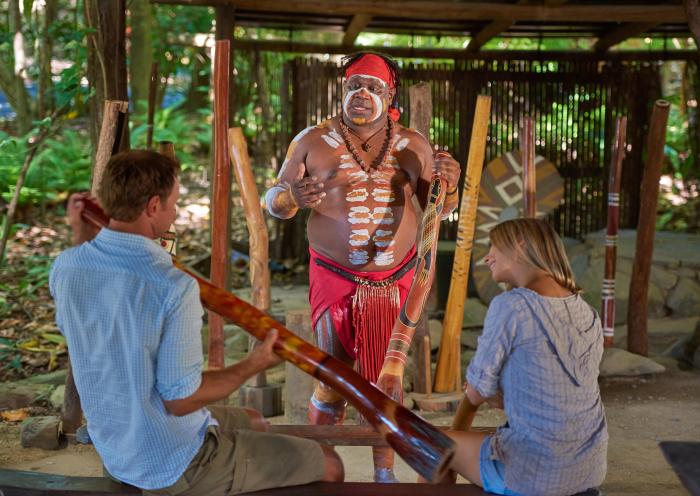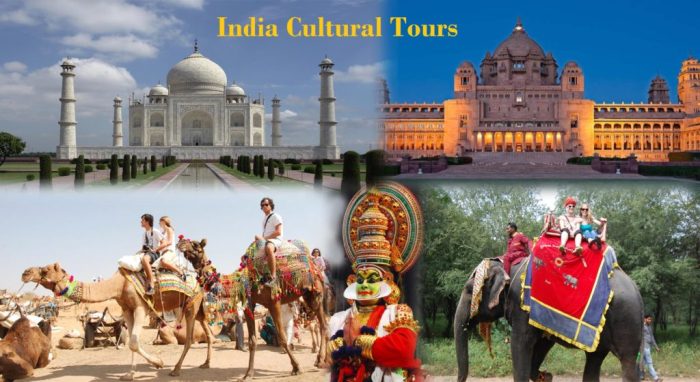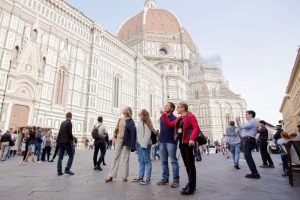
Embark on a journey through the vibrant tapestry of Cultural Heritage Tours, where history, tradition, and community intertwine to create unforgettable experiences. Discover the allure of exploring ancient wonders, UNESCO World Heritage Sites, and engaging with local customs on these enriching adventures.
Cultural Heritage Tours
Cultural heritage tours are travel experiences focused on exploring the historical, artistic, and cultural aspects of a specific region or destination. These tours aim to educate and immerse travelers in the rich heritage and traditions of a place, allowing them to gain a deeper understanding of its history and significance.
Popular Destinations for Cultural Heritage Tours
- Italy: Known for its ancient ruins, Renaissance art, and historic cities like Rome, Florence, and Venice.
- Peru: Home to the famous Machu Picchu, a UNESCO World Heritage Site, and the ancient Inca civilization.
- India: Rich in cultural diversity, with landmarks such as the Taj Mahal, Jaipur’s palaces, and Varanasi’s spiritual sites.
- Egypt: Offers a glimpse into the ancient Egyptian civilization through iconic sites like the Pyramids of Giza and the Sphinx.
Significance of Preserving Cultural Heritage Through Tourism
Preserving cultural heritage through tourism plays a vital role in safeguarding traditions, customs, and historical sites for future generations. By promoting sustainable tourism practices, local communities can benefit economically while maintaining their cultural identity. Additionally, cultural heritage tourism fosters cross-cultural exchange and understanding, contributing to global peace and harmony.
Benefits of Cultural Tours
Cultural tours offer a myriad of benefits that go beyond just sightseeing and experiencing new places. These tours provide valuable educational opportunities, promote cross-cultural understanding, and contribute to the local economy.
Educational Value of Cultural Tours
Cultural tours offer a unique learning experience by immersing participants in the history, traditions, and customs of different cultures. By visiting museums, historical sites, and interacting with locals, participants gain a deeper understanding of the world around them. This hands-on approach to learning helps to broaden perspectives and foster a lifelong appreciation for diversity.
Promoting Cross-Cultural Understanding
Cultural tours play a crucial role in fostering cross-cultural understanding by breaking down stereotypes and prejudices. By engaging with people from different backgrounds, participants gain insight into diverse ways of life, beliefs, and values. This firsthand interaction helps to bridge cultural divides and promote empathy and respect for others.
Contribution to the Local Economy
Cultural tours have a positive impact on the local economy by creating jobs and supporting small businesses. By patronizing local artisans, restaurants, and accommodations, cultural tour participants contribute directly to the livelihoods of the community. Additionally, the revenue generated from cultural tourism helps to preserve heritage sites and traditions for future generations to enjoy.
Types of Cultural Heritage Sites

When embarking on cultural heritage tours, visitors have the opportunity to explore a wide range of sites that showcase the rich history and traditions of a particular region. These sites can be categorized into various types, each offering a unique perspective on the cultural heritage of the area.
UNESCO World Heritage Sites
UNESCO World Heritage Sites are iconic landmarks or areas recognized for their outstanding universal value to humanity. These sites are carefully preserved and protected to ensure their cultural significance is maintained for future generations. Some examples of UNESCO World Heritage Sites that are often included in cultural heritage tours include the Great Wall of China, the Pyramids of Egypt, and Machu Picchu in Peru.
Ancient Ruins
- Ancient ruins are archaeological sites that contain the remnants of past civilizations, such as temples, palaces, and cities.
- Visitors can explore ancient ruins to gain insights into the daily lives, beliefs, and achievements of ancient societies.
- Examples of ancient ruins commonly visited on cultural heritage tours include the Roman Colosseum, Petra in Jordan, and Angkor Wat in Cambodia.
Historical Sites
- Historical sites are locations that played a significant role in shaping the history of a particular region or country.
- These sites often include landmarks, monuments, and buildings that commemorate important events or individuals.
- Popular historical sites visited on cultural heritage tours include the Acropolis in Greece, the Taj Mahal in India, and the Palace of Versailles in France.
Cultural Museums
- Cultural museums house collections of artifacts, artworks, and exhibits that showcase the cultural heritage of a specific group or region.
- Visitors can learn about the traditions, customs, and artistic expressions of different cultures through the displays in these museums.
- Examples of cultural museums often included in cultural heritage tours are the Louvre Museum in Paris, the British Museum in London, and the Smithsonian Institution in Washington, D.C.
Cultural Immersion Experience

When it comes to cultural heritage tours, one of the most rewarding aspects is the opportunity for cultural immersion. It allows travelers to truly experience and understand the traditions, customs, and way of life of a particular community or region.
Interacting with Local Communities
Interacting with local communities plays a crucial role in enhancing the cultural immersion experience during tours. It provides a unique opportunity to engage with the people who live in the area, learn from them firsthand, and gain a deeper insight into their culture.
- Attend local festivals or events to witness traditional performances and rituals.
- Participate in hands-on activities such as cooking classes, craft workshops, or traditional ceremonies.
- Engage in conversations with locals to learn about their daily lives, beliefs, and values.
- Support local businesses by shopping at markets or buying handmade crafts directly from artisans.
Tips for Maximizing Cultural Immersion
To make the most out of your cultural immersion experience, consider the following tips:
- Learn basic phrases in the local language to facilitate communication.
- Respect local customs and traditions, and dress modestly when visiting religious sites.
- Be open-minded and willing to try new things, such as unfamiliar foods or cultural practices.
- Immerse yourself in the local lifestyle by staying in homestays or guesthouses run by local families.
As we conclude our exploration of Cultural Heritage Tours, we are reminded of the profound impact these experiences have on fostering cultural appreciation, preserving heritage, and supporting local economies. Each trip is not just a vacation but a meaningful connection to the past and present, leaving indelible memories for travelers worldwide.
FAQ Explained
What makes cultural heritage tours unique?
Cultural heritage tours offer a deeper understanding of a region’s history, traditions, and customs, providing immersive experiences that go beyond typical sightseeing.
How do cultural tours contribute to local economies?
By attracting tourists to lesser-known areas and supporting local businesses, cultural tours help boost economic growth and create sustainable livelihoods for communities.
What should travelers keep in mind for cultural immersion experiences?
Respect local customs, engage with residents, try authentic cuisine, and participate in cultural activities to make the most of your immersion experience.





